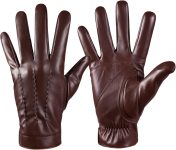
Black Friday Winter Leather Gloves for Leather Gloves Review – Oemiu
Black Friday Winter Leather Gloves: Finding the Perfect Pair for Comfort and Style
As the crisp air of autumn gives way to the icy grip of winter, the quest for the perfect pair of winter gloves begins. Leather gloves, renowned for their durability, style, and inherent warmth, are a popular choice. Black Friday presents an exceptional opportunity to snag premium quality leather gloves at significantly reduced prices. But with a vast array of styles, materials, and features available, navigating the Black Friday sales can be overwhelming. This guide will delve into the world of winter leather gloves, helping you make an informed decision and find the ideal pair to keep your hands warm and stylish throughout the cold season. We’ll explore different types of leather, insulation options, design considerations, and key factors to consider when making your purchase, ensuring you find the best winter leather gloves for your needs.
Understanding Leather Types and Their Performance
The quality and performance of leather gloves are heavily influenced by the type of leather used in their construction. Different types of leather offer varying degrees of durability, flexibility, water resistance, and warmth. Understanding these distinctions is crucial when selecting gloves for specific winter conditions and activities. Cowhide, known for its robustness and affordability, is a common choice for everyday winter gloves. It offers good abrasion resistance and can withstand moderate wear and tear. However, cowhide tends to be stiffer than other types of leather and may require a break-in period to achieve optimal comfort. Deerskin, on the other hand, is exceptionally soft and supple, providing excellent dexterity and a comfortable fit from the first wear. Deerskin gloves are often preferred for activities that require fine motor skills, such as driving or photography, even in cold weather. Goatskin is another popular option, prized for its durability and water resistance. Goatskin gloves are naturally more resistant to moisture than cowhide or deerskin, making them a good choice for wet or snowy conditions. They also tend to be thinner and more pliable than cowhide, offering a good balance of protection and dexterity. Finally, for the ultimate in luxury and performance, consider sheepskin or lambskin leather gloves. These leathers are incredibly soft and lightweight, providing exceptional warmth and comfort. Sheepskin gloves are particularly well-suited for extremely cold weather, as the natural lanolin in the wool helps to insulate and moisturize the skin. However, sheepskin is also more delicate and requires more care than other types of leather. The type of tanning process also affects the final feel and look of the leather. Chrome-tanned leather is more common and durable, while vegetable-tanned leather offers a more natural look and feel, often aging beautifully over time. When considering premium leather hand protection this Black Friday, remember to research the origin and tanning process to best meet your needs.
| Leather Type | Durability | Flexibility | Water Resistance | Warmth | Typical Use |
|---|---|---|---|---|---|
| Cowhide | High | Moderate | Moderate | Moderate | Everyday wear, work gloves |
| Deerskin | Moderate | High | Low | Moderate | Driving, photography, activities requiring dexterity |
| Goatskin | High | Moderate | High | Moderate | Wet or snowy conditions, general outdoor use |
| Sheepskin/Lambskin | Low to Moderate | High | Low | High | Extremely cold weather, luxury gloves |
Insulation and Lining: Maximizing Warmth and Comfort
While the leather itself provides a degree of insulation, the addition of a lining significantly enhances the warmth and comfort of winter gloves. Various insulation materials are available, each offering different levels of warmth, breathability, and moisture management. Thinsulate, a synthetic microfiber insulation, is a popular choice for its exceptional warmth-to-weight ratio. It effectively traps body heat while remaining lightweight and flexible, allowing for good dexterity. Primaloft is another synthetic insulation option that offers similar performance to Thinsulate, but with enhanced water resistance. Primaloft retains its insulating properties even when wet, making it a good choice for damp or snowy conditions. Fleece linings provide a soft and comfortable feel against the skin, while also adding a layer of insulation. Fleece is breathable and wicks away moisture, helping to keep hands dry and comfortable. However, fleece is not as warm as Thinsulate or Primaloft and may not be sufficient for extremely cold weather. Wool linings offer excellent warmth and natural moisture-wicking properties. Wool can absorb a significant amount of moisture without feeling wet, helping to regulate hand temperature and prevent clamminess. However, wool can be itchy for some individuals and may require a break-in period to soften. Silk linings provide a luxurious feel and add a thin layer of insulation without adding bulk. Silk is also naturally hypoallergenic and breathable, making it a good choice for individuals with sensitive skin. However, silk is not as warm as other insulation options and may not be suitable for extremely cold weather. The choice of lining material ultimately depends on your individual preferences and the specific winter conditions you expect to encounter. Consider the level of warmth you require, the importance of breathability and moisture management, and any potential sensitivities to certain materials. Also, consider the thickness of the lining, as a thicker lining will generally provide more insulation but may reduce dexterity. When shopping for leather gloves on Black Friday, carefully examine the lining material and construction to ensure optimal warmth and comfort. Look for linings that are securely stitched in place and that cover the entire inside of the glove, providing full insulation. Consider the type of activities you’ll be doing when you are looking at premium leather hand protection this Black Friday.
Style and Design: Finding the Perfect Fit and Aesthetic
Beyond functionality, the style and design of winter leather gloves are important considerations, reflecting personal taste and complementing your overall winter wardrobe. The classic design of a leather glove typically features a simple, streamlined silhouette with minimal embellishments. These gloves are versatile and can be worn with a variety of outfits, from casual to formal. Some gloves feature decorative stitching, embossing, or other details that add a touch of visual interest. Gauntlet gloves extend further up the wrist and forearm, providing additional coverage and protection from the elements. Gauntlet gloves are a good choice for extremely cold weather or for activities such as skiing or snowboarding, where exposure to snow and wind is high. Fingerless gloves, also known as driving gloves, offer a greater degree of dexterity and tactile feedback, making them ideal for driving or other activities that require fine motor skills. However, fingerless gloves provide less warmth than full-finger gloves and may not be suitable for extremely cold weather. Convertible gloves feature a mitten flap that can be folded back to expose the fingers, providing the flexibility of both full-finger and fingerless gloves. These gloves are a good choice for activities that require both warmth and dexterity, such as photography or fishing. The fit of the gloves is also crucial for both comfort and performance. Gloves that are too tight can restrict circulation and cause discomfort, while gloves that are too loose can be bulky and reduce dexterity. Measure your hand circumference and length to determine the appropriate glove size according to the manufacturer’s sizing chart. Consider the shape and size of your fingers when selecting gloves. Some gloves are designed with a more tailored fit, while others are more generously sized. Choose gloves that fit comfortably without feeling too tight or too loose. Consider also the overall aesthetic of the gloves and how they complement your personal style. Choose gloves that are made from high-quality materials and that are well-constructed. Check the stitching, the lining, and the hardware to ensure that the gloves are durable and will withstand regular use. The color of the gloves should also complement your wardrobe. Black and brown are classic and versatile choices, while other colors can add a pop of personality. Don’t just look at the price when looking at the Black Friday winter leather gloves sales, also examine the craftsmanship.
Caring for Your Leather Gloves: Extending Their Lifespan
Proper care and maintenance are essential for preserving the quality and extending the lifespan of your winter leather gloves. Leather is a natural material that can dry out and crack if not properly cared for. Regular cleaning and conditioning will help to keep your gloves supple and protected from the elements. To clean your leather gloves, use a damp cloth to wipe away any dirt or grime. Avoid using harsh detergents or solvents, as these can damage the leather. For stubborn stains, consider using a specialized leather cleaner. After cleaning, allow your gloves to air dry away from direct heat or sunlight. Heat can cause the leather to dry out and crack. Once the gloves are dry, apply a leather conditioner to help replenish the natural oils and keep the leather supple. Use a high-quality leather conditioner that is specifically designed for gloves. Apply a small amount of conditioner to a clean cloth and gently massage it into the leather. Pay particular attention to areas that are prone to drying out, such as the fingertips and palms. Avoid over-conditioning the leather, as this can make the gloves feel greasy. Store your leather gloves in a cool, dry place away from direct sunlight. Avoid storing them in plastic bags, as this can trap moisture and lead to mildew. Instead, store them in a breathable fabric bag or box. If your gloves get wet, allow them to air dry away from direct heat or sunlight. Do not use a hairdryer or other heat source to dry them, as this can damage the leather. Once the gloves are dry, apply a leather conditioner to help restore their suppleness. For minor scuffs or scratches, use a leather polish to restore the color and shine. Apply a small amount of polish to a clean cloth and gently buff the affected area. If your gloves are heavily soiled or damaged, consider taking them to a professional leather cleaner. A professional cleaner can safely and effectively clean and repair your gloves without damaging the leather. Regular care and maintenance will help to keep your winter leather gloves looking and feeling their best for years to come. Take the time to clean, condition, and store your gloves properly, and they will provide you with warmth, comfort, and style for many winters to come. Consider investing in a good quality leather care kit to help you keep your gloves in top condition. Also, try to rotate between different pairs of leather gloves to prevent any one pair from wearing out too quickly. The better you care for your premium leather hand protection this Black Friday, the longer they will last.
Black Friday Strategies: How to Snag the Best Deals
Black Friday can be a chaotic shopping experience, but with a strategic approach, you can significantly increase your chances of snagging the best deals on winter leather gloves. Start by researching different brands and retailers well in advance of Black Friday. Identify the styles, materials, and features that are most important to you, and make a list of specific models you are interested in. Check the websites of your favorite retailers to see if they have released any previews of their Black Friday sales. Many retailers will offer sneak peeks of their deals in the weeks leading up to Black Friday, giving you a chance to plan your shopping strategy. Sign up for email newsletters from retailers and brands to receive exclusive deals and promotions. Many retailers offer special discounts to their email subscribers on Black Friday. Follow retailers and brands on social media to stay up-to-date on their latest deals and promotions. Many retailers will announce flash sales and other limited-time offers on social media. Be prepared to shop early. Many Black Friday sales start online or in-store on Thanksgiving Day, and the best deals often sell out quickly. If you are planning to shop in-store, arrive early to avoid the crowds. If you are shopping online, be sure to create an account with your favorite retailers and save your payment information in advance. This will speed up the checkout process and increase your chances of securing the deals you want. Compare prices across different retailers before making a purchase. Just because a retailer is advertising a Black Friday deal doesn’t mean it’s the best price available. Use price comparison websites to compare prices across multiple retailers and find the best deal. Be aware of return policies. Before making a purchase, be sure to read the retailer’s return policy. This will ensure that you can return the gloves if they don’t fit or if you are not satisfied with the quality. Don’t get caught up in the hype. Black Friday can be a stressful and overwhelming experience. Don’t feel pressured to buy something you don’t need or want. Stick to your budget and only purchase items that you have researched and are confident will be a good value. By following these strategies, you can increase your chances of finding the perfect pair of winter leather gloves at a great price this Black Friday. Remember to stay organized, be patient, and have fun! With a little planning and effort, you can make the most of the Black Friday sales and find the ideal gloves to keep your hands warm and stylish all winter long. Make sure you understand the sales to get the best deal on premium leather hand protection this Black Friday.
Frequently Asked Questions (FAQ)
What are the key factors to consider when buying winter leather gloves?
Several factors are crucial when selecting winter leather gloves. First, consider the type of leather. Cowhide is durable and affordable, deerskin is soft and flexible, goatskin offers water resistance, and sheepskin provides exceptional warmth. Second, evaluate the insulation. Thinsulate and Primaloft are excellent for warmth-to-weight ratio, fleece offers comfort, and wool provides natural moisture-wicking. Third, assess the style and design. Choose a style that complements your wardrobe and provides the desired level of coverage and dexterity. Fourth, ensure a proper fit. Measure your hand circumference and length to determine the correct glove size, and choose gloves that fit comfortably without being too tight or too loose. Finally, consider the quality of construction and materials. Look for durable stitching, a secure lining, and high-quality hardware. These considerations will help you find the perfect balance of warmth, comfort, style, and durability in your winter leather gloves.
How do I properly measure my hand for gloves?
Measuring your hand accurately is essential for finding gloves that fit comfortably and provide optimal performance. To measure your hand circumference, use a flexible measuring tape to wrap around the widest part of your hand, just below your knuckles. Make a fist and measure around your knuckles, excluding your thumb. Record the measurement in inches or centimeters. To measure your hand length, place your hand flat on a piece of paper and trace its outline. Measure from the tip of your middle finger to the base of your palm, where it meets your wrist. Record the measurement in inches or centimeters. Compare your measurements to the manufacturer’s sizing chart to determine the appropriate glove size. Keep in mind that sizing can vary slightly between different brands and styles, so it’s always best to consult the specific sizing chart for the gloves you are interested in. If you are between sizes, it’s generally recommended to choose the larger size to ensure a comfortable fit.
What is the difference between insulated and uninsulated leather gloves?
Insulated and uninsulated leather gloves serve different purposes and are suitable for different weather conditions. Uninsulated leather gloves provide basic protection from the elements and offer a good level of dexterity. They are suitable for mild winter weather or for activities where fine motor skills are required. Insulated leather gloves, on the other hand, feature a layer of insulation that provides additional warmth in cold weather. The type and thickness of the insulation will determine the level of warmth provided by the gloves. Insulated gloves are a better choice for extremely cold weather or for activities where you will be exposed to the elements for extended periods of time. The trade-off for the added warmth is a slight reduction in dexterity. Consider the specific winter conditions you expect to encounter and the activities you will be doing when choosing between insulated and uninsulated leather gloves.
How do I care for leather gloves to keep them in good condition?
Proper care and maintenance are essential for preserving the quality and extending the lifespan of your leather gloves. To clean your leather gloves, use a damp cloth to wipe away any dirt or grime. Avoid using harsh detergents or solvents, as these can damage the leather. For stubborn stains, consider using a specialized leather cleaner. After cleaning, allow your gloves to air dry away from direct heat or sunlight. Heat can cause the leather to dry out and crack. Once the gloves are dry, apply a leather conditioner to help replenish the natural oils and keep the leather supple. Use a high-quality leather conditioner that is specifically designed for gloves. Store your leather gloves in a cool, dry place away from direct sunlight. Avoid storing them in plastic bags, as this can trap moisture and lead to mildew. Instead, store them in a breathable fabric bag or box.
What are some common signs that my leather gloves need to be replaced?
Several signs indicate that your leather gloves may need to be replaced. If the leather is cracked, dry, or stiff, it may be a sign that the gloves are no longer providing adequate protection or comfort. Cracks can weaken the leather and make it more susceptible to tearing. If the stitching is coming undone or the seams are splitting, it may be a sign that the gloves are no longer structurally sound. Loose stitching can compromise the insulation and allow cold air to penetrate. If the lining is torn or worn out, it may be a sign that the gloves are no longer providing adequate warmth. A worn-out lining can also be uncomfortable and reduce dexterity. If the gloves no longer fit properly or are too tight or too loose, it may be a sign that they need to be replaced. Gloves that don’t fit properly can restrict circulation and cause discomfort. If the gloves are no longer providing adequate warmth or protection, it may be time to invest in a new pair. Consider the overall condition of the gloves and how well they are performing before deciding whether to replace them.
Are leather gloves waterproof?
While leather is naturally water-resistant, it is not inherently waterproof. Untreated leather will absorb water, which can cause it to become stiff and uncomfortable. Some types of leather, such as goatskin, are naturally more water-resistant than others. Additionally, some leather gloves are treated with water-repellent finishes that help to prevent water from penetrating the leather. However, these finishes will eventually wear off over time and need to be reapplied. For maximum water protection, consider purchasing leather gloves that are lined with a waterproof membrane. These membranes are typically made of Gore-Tex or similar materials and provide a complete barrier against water penetration. Keep in mind that even waterproof leather gloves may not be completely waterproof if the seams are not sealed. Look for gloves that have taped or sealed seams to ensure maximum water protection. If you are planning to use your leather gloves in wet or snowy conditions, it’s essential to choose gloves that are specifically designed for water resistance.
How do I choose the right leather glove for a specific activity, like skiing or driving?
Choosing the right leather glove for a specific activity depends on the unique demands of that activity. For skiing or snowboarding, prioritize warmth, water resistance, and dexterity. Look for gloves with a waterproof membrane, a thick insulation layer, and a gauntlet cuff to keep snow out. Reinforced palms and fingers will provide added durability and grip. For driving, prioritize dexterity, comfort, and grip. Look for gloves made from soft and supple leather, such as deerskin, with a close fit. Fingerless gloves or gloves with perforated fingers can provide added ventilation and grip. For general outdoor activities, prioritize warmth, durability, and comfort. Look for gloves made from a durable leather, such as cowhide or goatskin, with a moderate insulation layer. Choose gloves that fit comfortably and provide good dexterity. Consider the specific activities you will be doing and the weather conditions you expect to encounter when choosing the right leather gloves.
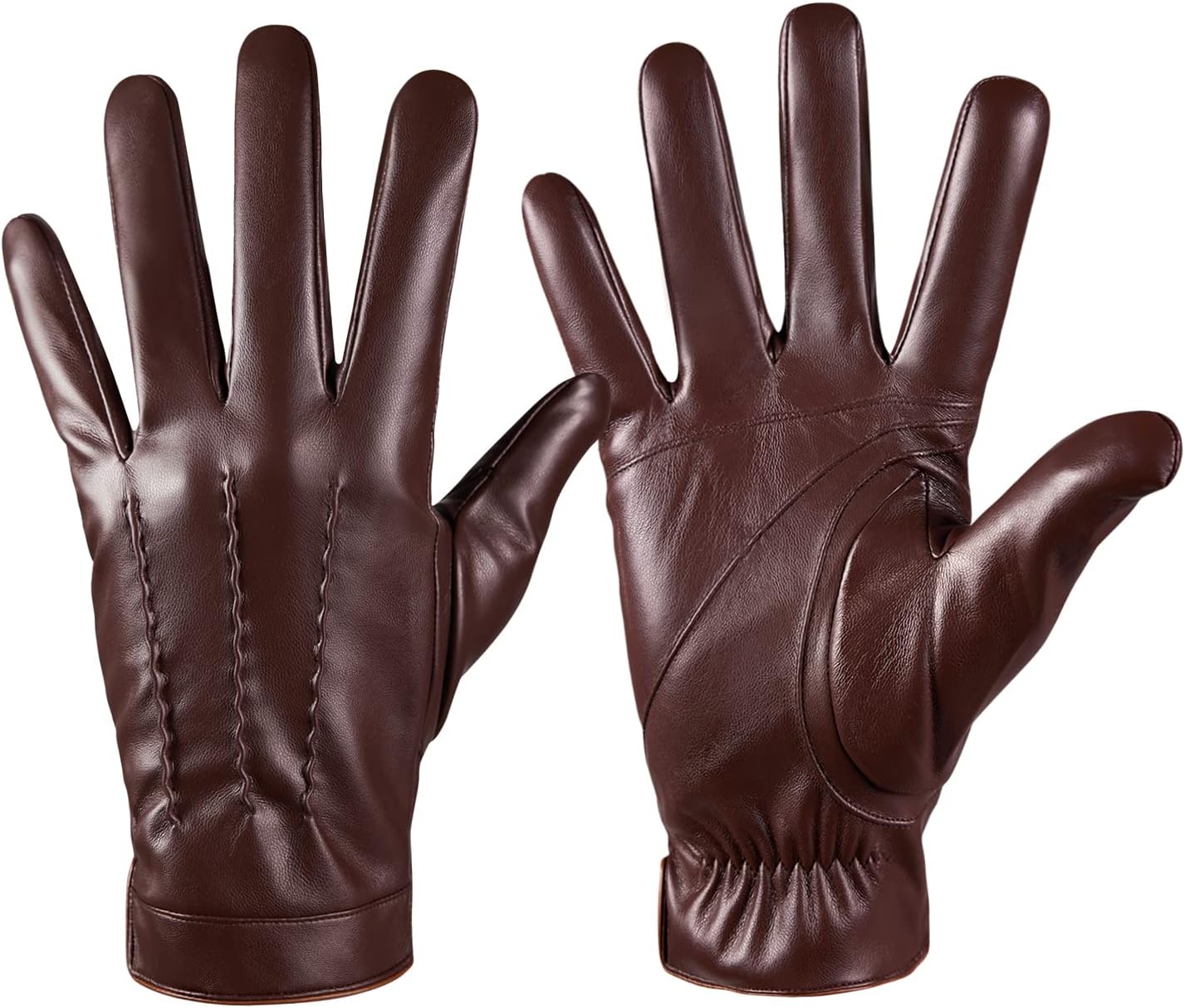

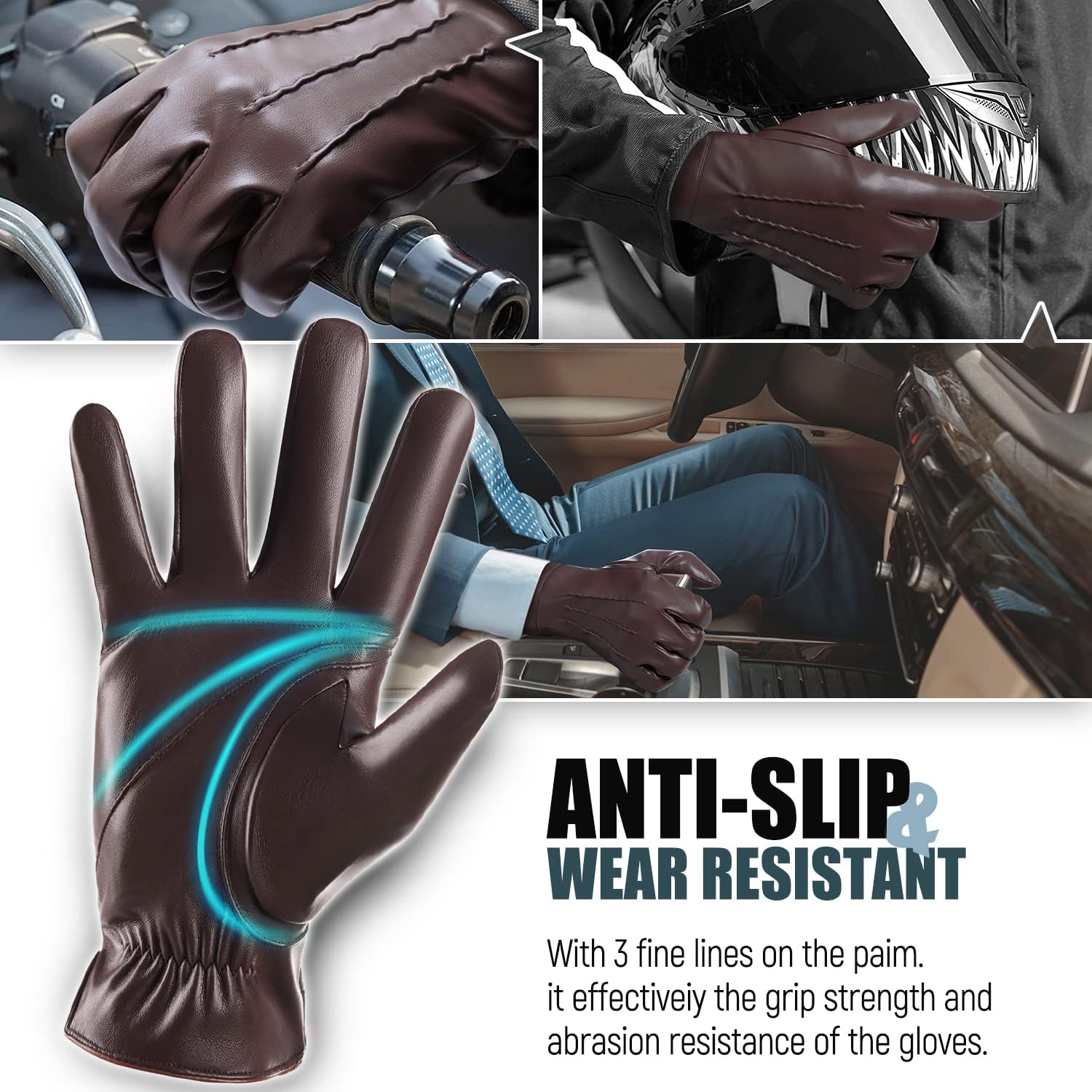
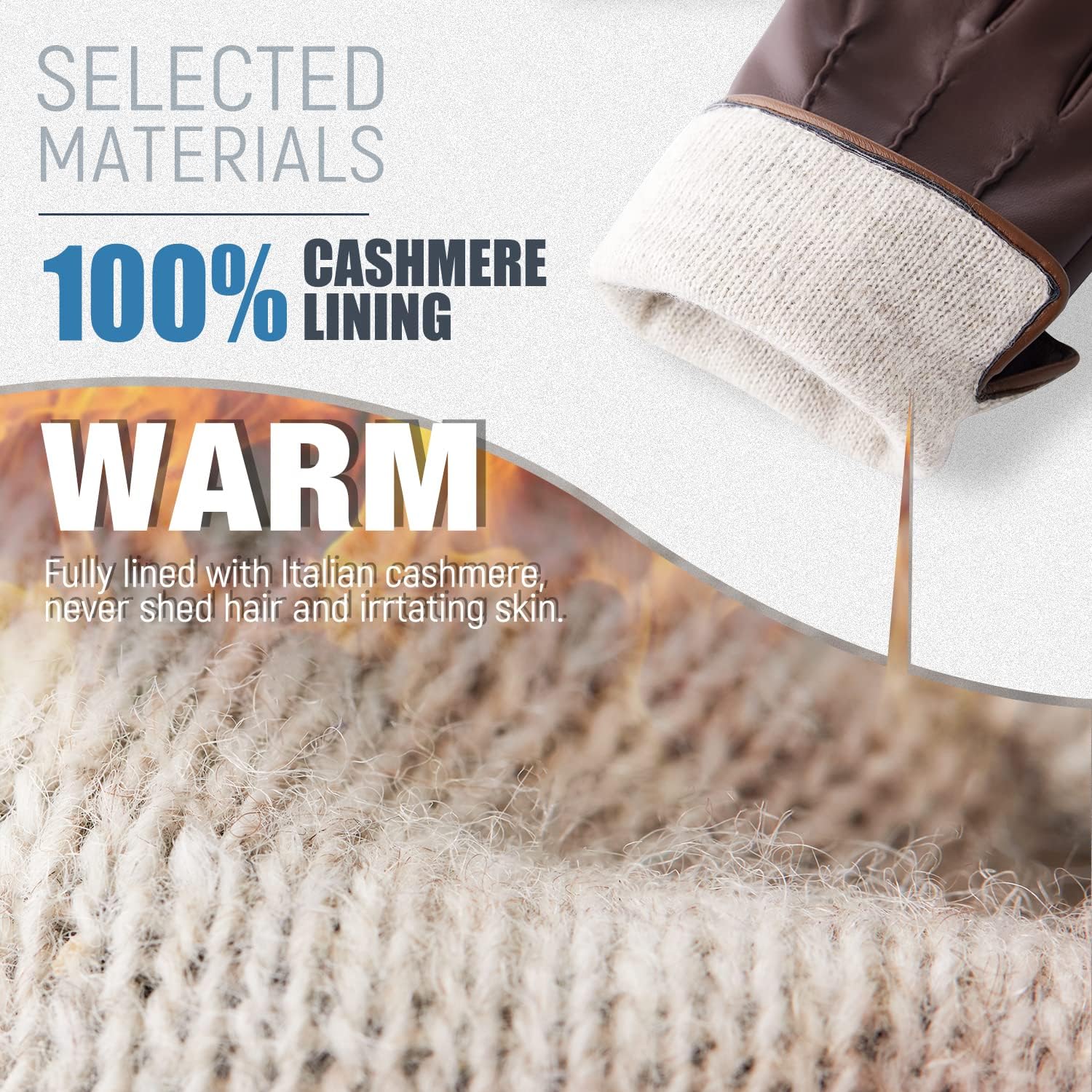
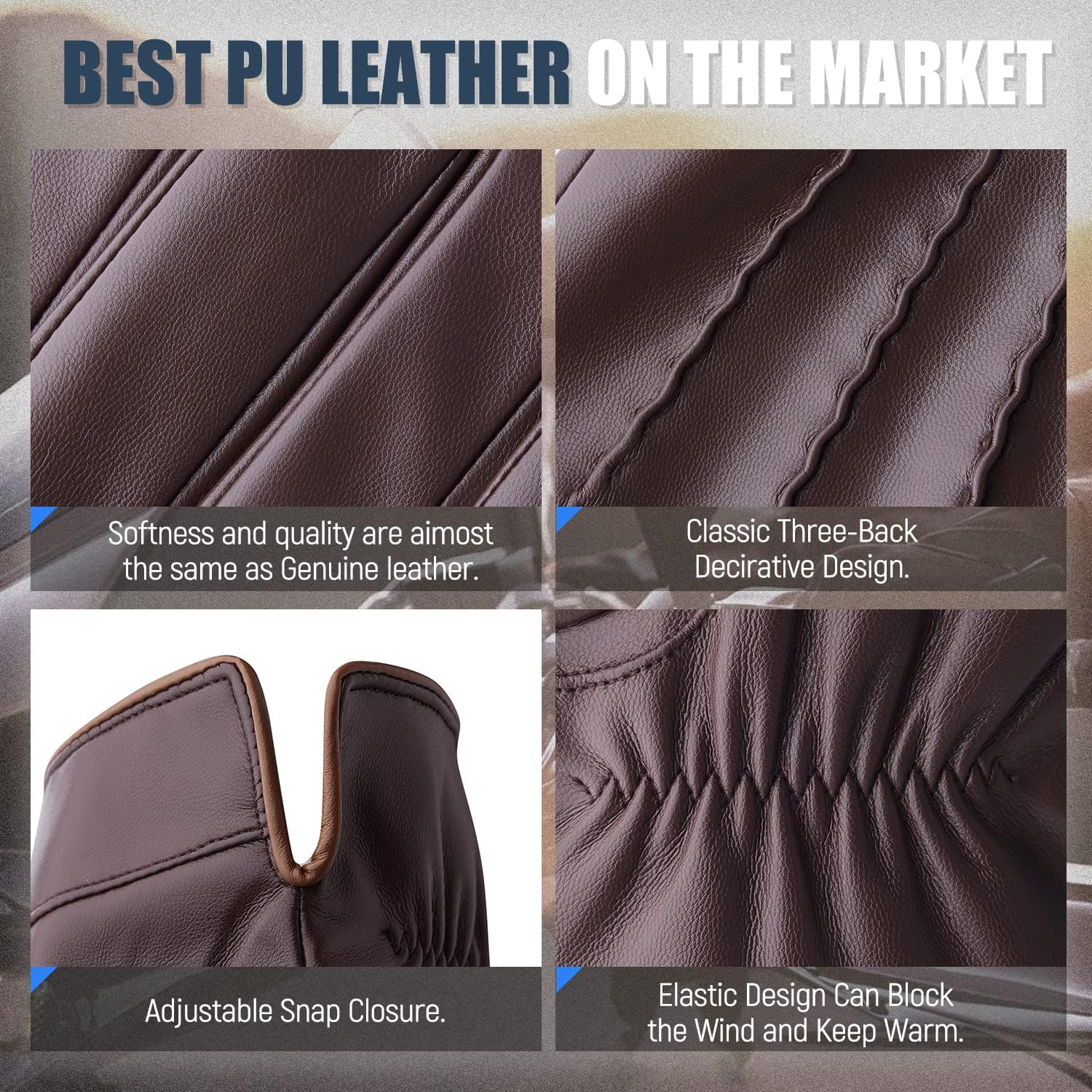
Price: $29.99 - $18.99
(as of Sep 09, 2025 03:17:05 UTC – Details)




